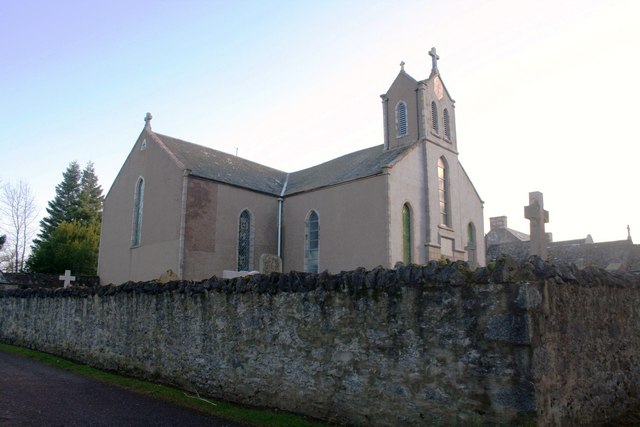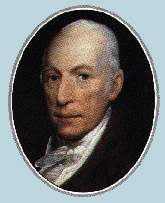|
Tomintoul
Tomintoul (; from , meaning "Hillock of the Barn") is a village in the Moray council area of Scotland in the historic county of Banffshire. Within Cairngorms National Park, the village lies close to the banks of the River Avon and is said by some to be the highest village in the Scottish Highlands, although at it is still much lower than the highest village in Scotland (Wanlockhead, in Dumfries and Galloway at ). By 1841, the parish reached a population of 1,722. In 1951, this had fallen to just 531. The 2011 census indicated a village population of 716 people. The village is historically part of the Parish of Kirmichael. The 2004 film '' One Last Chance'', starring Kevin McKidd and Dougray Scott, was filmed in the village and the areas around it. The village is on the famed Malt Whisky Trail, which also includes Dufftown, Keith, Tomnavoulin, and Marypark. The surrounding countryside forms the Glenlivet Estate. Tomintoul Golf Club, founded in 1897, disappeared at t ... [...More Info...] [...Related Items...] OR: [Wikipedia] [Google] [Baidu] |
Kirkmichael, Moray
Kirkmichael is a parish in the council area of Moray, Scotland. It lies south of Ballindalloch and includes the Tomintoul Distillery. Geography The parish includes the largely unpopulated upper Stratha'an up to and including Loch A'an and the Shelter Stone. The village of Tomintoul is the largest settlement and the total area of the parish is . Demography In 1798 the parish was populated by 892 members of the Church of Scotland and 384 Roman Catholics, making the total population 1,276. In 2011 the figure was 606 and by 2022 it had declined further to 472. In 2001 Tomintoul's population was 322. Moray Council. (pdf) Retrieved 14 August 2024. History Stratha'an was a provincial lordship first recorded between 1194 and 1198 that was coextensive with the parishes of Kirkmichael and Inveravon, Moray, Invera ...[...More Info...] [...Related Items...] OR: [Wikipedia] [Google] [Baidu] |
Cairngorms National Park
Cairngorms National Park () is a national park in northeast Scotland, established in 2003. It was the second of National parks of Scotland, two national parks established by the Scottish Parliament, after Loch Lomond and The Trossachs National Park, which was set up in 2002. The park covers the Cairngorms range of mountains, and surrounding hills. Already the largest national park in the United Kingdom, in 2010 it was expanded into Perth and Kinross. Roughly 18,000 people live within the national park. The largest communities are Aviemore, Ballater, Braemar, Grantown-on-Spey, Kingussie, Newtonmore and Tomintoul. Like all other national parks of the UK, national parks in the UK, the park is IUCN protected area categories, IUCN designated Category V however it contains within its boundaries several national nature reserve (Scotland), national nature reserves that have IUCN Category II (national park) statuses, such as Abernethy Forest and Mar Lodge Estate. In 2018, 1.9 million ... [...More Info...] [...Related Items...] OR: [Wikipedia] [Google] [Baidu] |
River Avon (Strathspey)
The River Avon (pronounced “A'an” /ɑːn/) is a river in the Strathspey area of the Scottish Highlands, and a tributary of the River Spey. It drains the north-eastern area of the Cairngorm Mountains and is largely contained within the Cairngorms National Park The source of the River Avon is conventionally said to be Loch A'an situated between Cairn Gorm and Ben Macdui (Gaelic: ''Beinn MacDhuibh'').Royal Scottish Geographical Society, (2006), ''Scotland: an encyclopedia of places & landscapes'', page 39 Loch A'an itself collects headwaters from a number of burns on these two mountains. From there the river then continues east down Glen Avon to the north of Ben Avon, for 10 miles before turning north towards the village of Tomintoul and Strath Avon. There is a River Avon Fishing Association that promotes tourism in nearby towns and fishing along the river. Tributaries Over the first few miles flowing east through the Forest of Glenavon the Avon gathers to itself numero ... [...More Info...] [...Related Items...] OR: [Wikipedia] [Google] [Baidu] |
A939 Road
The A939 is a road in Scotland, connecting the A96 at Nairn on the Moray coast with the A95 Grantown-on-Spey. It then continues to the A93 at Ballater by way of the Grampian Mountains, passing Tomintoul and the Lecht Ski Centre. This road passes over four summits: #at Dava Moor 1053 ft (321m), #west of Bridge of Brown 1436 ft (438m), #at the Lecht Ski Centre 2090 ft (637m), #at the Gairnshiel Summit 1836 ft (550m). On the old A939, now redesignated the B976 between Gairnshiel Bridge and Crathie Crathie () is a village in Aberdeenshire, Scotland. It stands on the north bank of the River Dee. Abergeldie Castle is away. It was built around 1550 and had 19th century additions. It was garrisoned by General Hugh Mackay in 1689. Crathi ..., the road reaches 1568 ft (478m). The A939 is sometimes the first road in Great Britain closed due to snowfall between Cock Bridge and Tomintoul. References External links * A939 road at SABRE Mountai ... [...More Info...] [...Related Items...] OR: [Wikipedia] [Google] [Baidu] |
Dufftown
Dufftown ( ) is a burgh in Moray, Scotland. While the town is part of the historic Mortlach parish, the town was established and laid out in the early 19th century as part of a planned new town settlement. The town has several listed 19th century buildings and serves as a regional centre for agriculture, tourism and services. The town is well known for its whisky based economy, as it produces more whisky than any other town in Scotland and is home to several existing and former distilleries. History Counties of Scotland, Historically part of Banffshire, Dufftown is in the ancient parish of Mortlach (). There is evidence of Picts, Pictish settlement in the area and in approximately 566 AD, St. Moluag established the first Christian church in the area, the site of the present Mortlach Parish Church. In the Middle Ages, Bishop of Mortlach, Mortlach (in Latin ''Murthlacum'') was an episcopal see. The Diocese of Mortlach was one of Scotland's 13 medieval bishoprics. The names of fou ... [...More Info...] [...Related Items...] OR: [Wikipedia] [Google] [Baidu] |
Banffshire
Banffshire (; ; ) is a historic county in Scotland. The county town is Banff, although the largest settlement is Buckie to the west. The historic county ceased to be used for local government purposes in 1975. Since 1996 the area has been split between the Aberdeenshire and Moray council areas. The historic county boundaries of Banffshire are still used for certain functions, being a registration county and lieutenancy area. It borders the Moray Firth to the north, Moray and Inverness-shire to the west, and Aberdeenshire to the east and south. History Considerable evidence of prehistoric human habitation exists in the area, particularly near the coast. Examples include the cairn at Longman Hill and Cairn Lee, near the Burn of Myrehouse. The area also includes the ruins of several medieval castles and the 12th century kirk of Gamrie. Banffshire's origins as a shire (the area administered by a sheriff) are obscure. There is some evidence that it was a shire from the ... [...More Info...] [...Related Items...] OR: [Wikipedia] [Google] [Baidu] |
Alexander Gordon, 4th Duke Of Gordon
Alexander Gordon, 4th Duke of Gordon, (18 June 1743 – 17 June 1827), styled Marquess of Huntly until 1752, was a Scottish peer who was described by Lord Kames as the "greatest subject in Britain". He was also known as the "Cock o' the North", the traditional epithet of the chief of Clan Gordon. Early life Alexander Gordon was born at Gordon Castle, Fochabers, on 18 June 1743, the eldest son of Cosmo Gordon, 3rd Duke of Gordon, and his wife, Lady Catherine Gordon, daughter of the 2nd Earl of Aberdeen. He was educated at Eton and also possibly at Harrow. He succeeded as 4th Duke of Gordon in 1752. His younger brother was Lord George Gordon, who incited the Gordon riots. He was elected as a Scottish representative peer in 1767. In 1778 the government allocated funds to raise three fencible regiments in ' North Britain', one of which was the 'Gordon Fencibles' or North Fencibles' raised by Gordon for the Anglo-French War 1778-83, this was disbanded in 1783. He was app ... [...More Info...] [...Related Items...] OR: [Wikipedia] [Google] [Baidu] |
The Glenlivet Distillery
The Glenlivet distillery is a Speyside single malt Scotch whisky distillery near Ballindalloch in Moray, Scotland, that produces single malt Scotch whisky. It is the oldest legal distillery in the Highlands of Scotland. It was founded in 1824 and has operated almost continuously since. The distillery remained open throughout the Great Depression and its only closure came during World War II. The Glenlivet distillery has grown in the post-war period to become one of the biggest single malt distilleries. The Glenlivet brand is the biggest selling single malt whisky in the United States and the second biggest selling single malt brand globally after Glenfiddich. Today, the distillery is owned by the Chivas Brothers subsidiary of the French alcoholic beverages company Pernod Ricard, which also oversees the distillery's production of 5,900,000 proof litres per annum. The majority of this – enough for 6 million bottles – is sold as ''The Glenlivet'' single malt, with the remai ... [...More Info...] [...Related Items...] OR: [Wikipedia] [Google] [Baidu] |
Scotland's Malt Whisky Trail
Eight malt whisky distilleries and a cooperage form the Malt Whisky Trail in Scotland's Speyside. Seven of the eight distilleries are in production and operational, whilst the Dallas Dhu distillery is a historic distillery. The Malt Whisky Trail is a local theme route marketing initiative, established to promote the region's whisky-related cultural heritage and encourage tourism. Over half of Scotland's malt whisky distilleries are in Speyside, not all of which are open to the public. The heritage trail consists of the following Speyside single malt distilleries and a cooperage. * Benromach * Cardhu * Dallas Dhu * Glen Grant * Glen Moray * Glenfiddich * The Glenlivet * Speyside Cooperage The Speyside Cooperage is a cooperage located in Craigellachie, Aberlour, Scotland Scotland is a Countries of the United Kingdom, country that is part of the United Kingdom. It contains nearly one-third of the United Kingdom's land area, ... * Strathisla A 2012 BBC article r ... [...More Info...] [...Related Items...] OR: [Wikipedia] [Google] [Baidu] |
William Caulfeild (British Army Officer)
Major William Caulfeild was an officer in the British Army who is primarily known for his work supervising road and bridge construction in the Scottish Highlands in the 18th century. Early life He was born in Ireland, the son of the Hon. Toby Caulfeild who was a son of the first Viscount Charlemont. By the early 1730s, Caulfeild was serving as a Subaltern in the British Army. Roads and Bridges General Wade appointed him Inspector of Roads for Scotland in 1732. After the departure of General Wade in 1740, Caulfeild became responsible for directing all construction of new roads and bridges in Scotland until his death. Although he is not as well known as Wade, he is associated with the construction of far more roads than his predecessor. General Wade was responsible for of road, 40 bridges and 2 forts – whereas Caulfeild was responsible for of road and over 600 bridges. The largest individual lengths of roads built under the direction of Caulfeild included the military roads ... [...More Info...] [...Related Items...] OR: [Wikipedia] [Google] [Baidu] |





